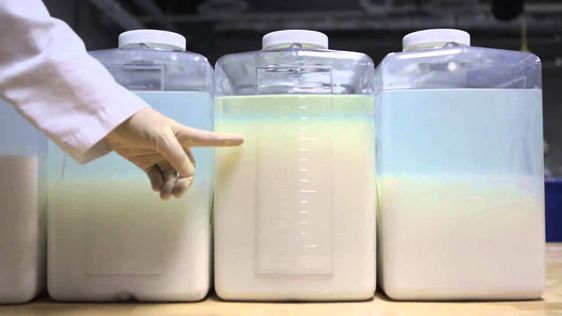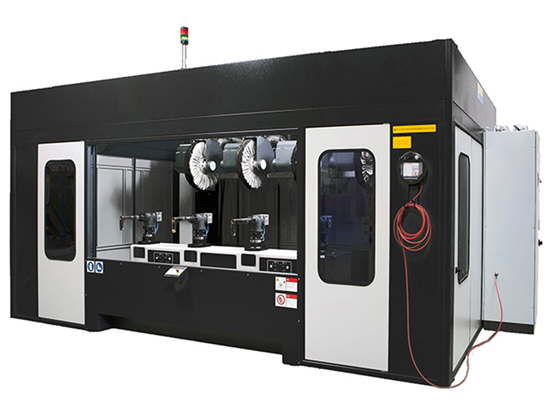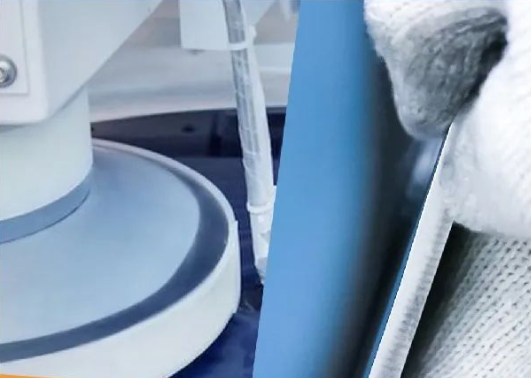
This article is also available in the following languages:
Tiếng Việt
繁體中文
The full name of CMP is Chemical-Mechanical Planarization.
Slurry, what we also called it “suspension”, means the solid particles stirred into the water, and not dissolved and dispersed in the water. It precipitated once the mixture stops sloshing and is an inhomogeneous, heterogeneous mixture.

The following factors will decide whether the particles settled in the slurry:
•Surface tension of liquid
•Thermal motion of liquid molecules—basically water
•Size of solid particles
When the volume and density of solid particles are sufficiently small, the liquid surface will have a high tension, thus forming a relatively stable suspension.
For example, we can understand the slurry as body Scrub, which is typical slurries concentrates. Its solid particles rub on the skin to remove aged cutin. Leaves skin smooth and white.

Slurry is a mixture used in the flattening process of the workpiece surface, which is composed of abrasive materials and chemical additives.

The main components of the slurry include abrasives, surfactants, pH buffer gels, oxidants and preservatives, etc. The abrasive is composed of silicon dioxide (SiO2), aluminum oxide (Al2O3), cerium oxide (CeO2), hydrogen peroxide (H2O2), potassium hydroxide (KOH), manganese dioxide (MnO2), iron nitrate (Fe(NO3)3), potassium iodate (KIO3), ammonia water (NH4OH) and other ingredients.
Polishing OF Semiconductor
Early in the 1960s, an American famous company has been first proposed use silica sols and gels for polishing and grinding on silicon wafers.
From then on, polishing slurries became a indivisible part in the semiconductor manufacturing process.
Today, the main global brands of slurries are: Versum Materials, Saint-Gobain, Eminess, Fujimi, Dow Chemicals, Cabot Microelectronic, FujiFilm, BASF, 3M, Evonik, and Hitachi Chemical and others.
The manufacturing process of the chip is layer by layer, and must be ensured the flatness of this layer before producing the next layer.
However, the wafer surface is uneven, and there produce a lot of smoke dust during the production, so the flatness cannot be guaranteed.
Therefore, it require the assistance of chemical mechanical polishing, that is, using the polishing slurries combined with the polishing brush to smooth the surface by rubbing hard and desperately rotating.
The ground parts include copper film, silicon oxide film, tungsten film, silicon film, LOW-K film, etc.


How to choose slurries?
The selection of slurries should pay attention to the following factors: Suspension impurity purity, silica particle size, silica particle hardness and uniformity, selection and proportion of surfactant, pH adjustment, selection and proportion of oxidant and so on.
For example:
SIO2< 3%
NH4OH < 0.2%
Organic compound < 0.2%
H2O > 96.6%
How to choose polishing pads?
1.Slurries can stay steady on the pad that keep a high effective polishing effect.
2.The surface of pad surface should have suitable hardness that ensure the polishing effect.
3.Choose a softer pad which can transform with the bending of chip to get the better evenness.
4.The “by-product” produced can be discharged after polishing, and shows the better polishing reproducibility.
5.Reduces the pad material’s impurities for good cleaning effect.

How to calculate the polishing removal rate?
Polishing removal rate decided by relative speed, pressure and proportional constant.
Relative speed decided by the rotating speed of CMP equipment.
Pressure is from the head of CMP equipment.
Proportional constant based on the slurries and pads.
Thus, we can get that:
Polishing removal rate= relative speed*Pressure*proportional constant







